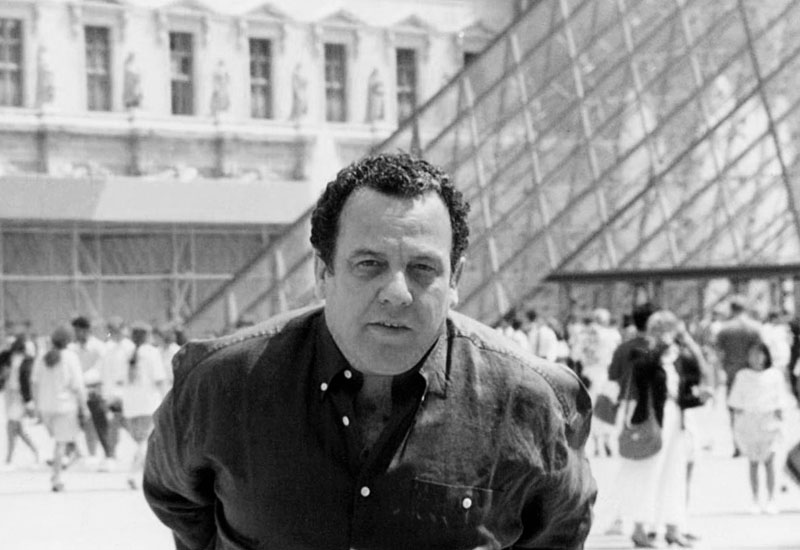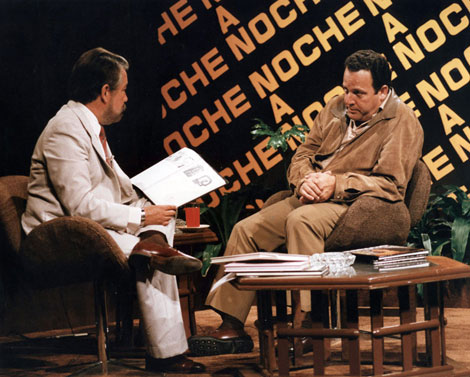Ignacio Villarreal
The unrecognized father of advertising in Monterrey

| The creative prototype from Monterrey |
Behind the iconic commercials and the catchiest jingles in the history of Monterrey, there is a seldom told story about the man who gave an identity and personality to many of the city’s symbols.
By Maximilliano Torres |
| LOGOS ON THE REGIOMONTANO
IMAGINARY |
|
|
|
I have been searching for Ignacio Villarreal Junco for four years. His digital fingerprints are on the emblems of this city and nevertheless - he doesn ’t seem to be anywhere! It all began during a chat with a friend while we were talking about our daily news reading routines. I was telling him about the sites that I visit for my information fix.
«After the news sites, I like to visit Kotte, Metafilter, Mediagaer and sometimes I take a look at ArtDaily, it’s been around since the beginning of 2000, but I like how it covers art as a daily theme.
–ArtDaily?
–artdaily.com
–Oh, look. How neat, it’s a site made by Regios (the masculine diminutive of the nickname Regiomontano used to describe the inhabitants of Monterrey, Nuevo Leon, Mexico, known for their peculiar ways [feminine: Regia]).
–What?
–Yes, look all the way down, in the directory.»
I scrolled down hastily, and came to the end of the site where the names of its creators and collaborators were written: “Founder: Ignacio Villarreal”.
Surnames are geography. Well… not always. But, with a last name like Villarreal it is the case - and the geography is Monterrey. |
 |
| Presenting ESPACIO magazine in an interview with Agustín Granados in 1994. (Photo: ignaciovillarreal.org) |
|
I was before a web site that covers international art in the form of news, everyday, in English, since 1996, with Regiomontano workforces. To clarify – I was in the presence of an exception to the rule! Who were these devotees of journalism on art that had created “The First Art Newspaper on the Net”? As a resident of a city whose editorial industry has vanquished entire cultural sections, or in a more optimistic point of view, has relinquished them to share space with a crossword puzzle or Sudoku – the idea intrigued me very much.
I was impressed by the low profile with which ArtDaily has kept itself in operation since 1996. I was intrigued with the elitist (and very regiomontano) gesture of communicating with its audience in English. I was intrigued with its exclusive interest of solely regarding the events happening within the key cities of art commerce. I was intrigued with its marginalization of the Mexican scene, both national and local.
I was eager to investigate more about this project that represented with such precision the idiosyncrasies of the Regiomontanos. However, I had to defer the mystery because I made an even more surprising discovery; the personal web site of the founder of Art Daily - Ignacio Villarreal Junco.
Ignaciovillarreal.org is a compendium of his journey – mainly as a creative publicist – from between the decades of 1960 to 1990. This register of logos, slogans, corporate identities and television spots is a collective walk down the ‘memory lane’ of Monterrey. Villarreal could pride himself of having designed a great part of the remembrances of generations of Regiomontanos and substantiate this merit with irrefutable evidence!
Here are five of his creations that provide insight about his influence upon Regiomontano imagery.
Identity of the University of Monterrey
In his section of Corporate Identities is the University of Monterrey from 1968. If it is so that this house of studies has had modifications since then, in essence, the logo designed by Villarreal has also withstood forty years of reliefs in graphic design.
|
| The amount of logos
with a touch of Villarreal has the potential to put any regiomontano
nostalgic. This is only a sample |
|
|
|
|
| 5.
400 years of Monterrey |
|
|
|
| 6.
ABACO and the decade of the 90's |
|
|
Uniform of the TRI (Mexican National Soccer team), France 1998
Amongst the three projects that he points out as his favorites, the design of the uniform that the Mexican National Soccer team wore in that year’s World Cup stands out, remembered because of the use of the Aztec Calendar on the jersey.
«I had the opportunity to team up with Enrique Borja, the president of the Mexican Soccer Federation at that time, and although all of our exchanges were by telephone, my relationship with who was an idol of Mexican soccer was always cordial and affectionate. It was a pleasure working with him,» he says on his web site.
The Identity of the Soccer Club of Monterrey
Conscious of the fundamental role of his work within the culture of the city, Viillarreal instructed his webmaster that the first thing that one should get clear upon entering his web page is that the hymn for the Rayados soccer team exists thanks to him. And the logo as well.
«That year I had been hired by the Rivero Santos brothers, Don Jaime and Don Manuel, to change the image of team. At that time they were the President and the Vice-president of the Monterrey team. What is more - the team didn’t even have a sponsor. I offered to make them a logo and all of the graphics, which later resulted in the “M” (associated with the ‘m-shape’ on the Sierra Madre Mountain range), and given my intimate friendship and confidence with Luis Aguilé, I promised them that the important Argentinian-Spanish composer would create a hymn for them - and he did! Furthermore, Aguilé didn’t even charge a cent. That is the truth,» avows Villarreal in a testimony also published on his page.
As if though that weren’t enough, the identity of the Tigres Soccer Club of the UANL is also his. In the Regiomontano alphabet the “T” of Tigres is also of his authorship.
Advertising Campaign of ABACO
Second only to the inerasable jingles of El Pollo Loco and Julio Cepeda, two of the melodies present in the memory of all of the Regiomontanos, are the one that Villarreal made for the financial group ABACO,
|
the Christmas commercial in which Aguilé sings, «por eso y muchas cosas mas, ven a mi casa esta navidad.» (because of this, and many other things, come to my house this Christmas), and the other - a compilation of scenes from the stressful life of an office worker comforted by the use of the song “Don’t Worry, Be Happy” by Bobby McFerrin. That was in 1990; since then television advertising in Monterrey has not ever had a better period transmitted through ideas and values in production.
The flamboyance of Mexico’s norteño (term used to identify the singularity of Mexico’s northern most states from the rest of the country) emblems pertaining to Villarreal’s portfolio isn’t limited to just these designs. Also to be found in the assortment is the logo for the campaign of the 400th anniversary of the city of Monterrey; the logo for the Borregos football team of the Monterrey TEC; and the identity of MARCO, the Museum of Contemporary Art in Monterrey, Nuevo Leon.
If Ignacio Villarreal has contributed so much to the design and advertising media, how come he is not a current role model? Why isn’t he giving conferences in symposiums? How come he doesn’t have the acknowledgement of the contemporaries of his trade?
After several attempts to find him and get in touch with him - my answers are only interpretative. It is probable that Villarreal is no longer up-to-date, nor would he be commemorated within his profession due to the fact that the designs and advertising in Monterrey are atypical traditions. The up and coming design and advertising agencies (Anagrama, Cadena y Asociados, Manifiesto Futura, Menosuncerouno, Face, Savvy-Studio) are first generation businesses; their founders didn’t inherit the trade from their parents, and by starting from ground-zero, have become models that refer back to foreigners. Ignacio Villarreal was creative when this line of work wasn’t the equivalent of a rockstar’s, but rather an unknown profession in the community.
In this city, a journalist, an architect, a doctor and a businessman know who was around before they were. Does the creative Regiomontano know who Ignacio Villarreal is? Is it important that one know his work? I have spent four years trying to interview him to ask him among other things - if he knows that he is the unknown ‘father of advertising' in Monterrey.®
|
|



